A complete guide to dry brining turkey for the best texture and flavor. Your holiday roast turkey never tasted this good! Follow my step-by-step guide to the dry brine method to ensure a juicy turkey with extra crispy skin that is golden brown perfection.
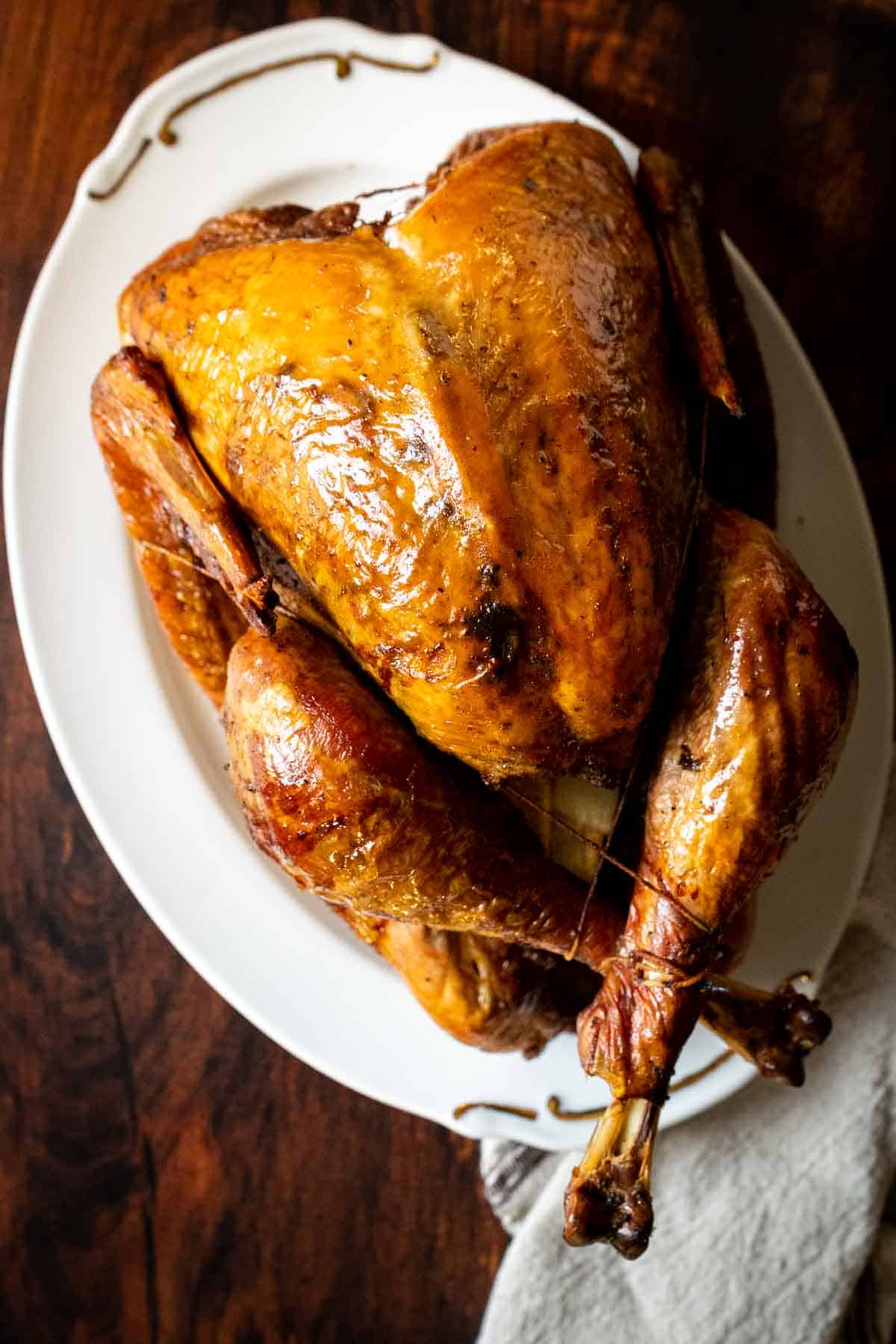
This post may include affiliate links. Please read my disclosure policy.
Nothing is worse than carving into the turkey you spent days preparing only for it to be dry and flavorless. Banish dry turkey!
This dry brine comes together in a matter of minutes and will take your Thanksgiving turkey to the next level. Dry brine once and you’ll never go back.
If you haven't yet selected a turkey check out my Thanksgiving turkey-buying guide. Be sure you know how to properly (safely) defrost a turkey, and how long thawed turkey can be stored before you roast it.
Also don't forget to save the turkey carcass to make turkey broth to freeze for your next holiday dinner.
Jump to:
Wet Brine vs Dry Brine
Brine is a bit of culinary wizardry where you use salt to break down the muscle proteins in the turkey so that the meat can absorb moisture. There are two brine methods.
Wet Method
The wet method submerges the turkey in a brine solution of cold water, salt, sugar, and herbs. The saltwater solution plumps the meat and infuses it with flavor.
Dry Method
Dry brining involves rubbing a mixture of salt and seasonings directly onto the turkey and leaving it uncovered in the refrigerator for a period of time. This method draws out moisture from the bird which is then reabsorbed creating a concentrated flavor and crispy skin.
Is Dry Brining or Wet Brining Better?
When it comes to preparing a Thanksgiving turkey, many cooks debate between wet brining and dry brining.
Wet brining a turkey requires significantly more room because a large bird needs to stay fully submerged in water in your fridge. Unless you have a second refrigerator this might not be a practical option. Wet brines add more moisture.
A dry brine is less messy than a wet brine. A dry-brined turkey takes up less space. But most importantly a dry-brined turkey will take on more flavor. You essentially season and salt in one step. The final benefit of a dry brine is a crispier skin.
Ultimately, the choice between wet brining and dry brining depends on personal preference and space.
My general rule of thumb is to wet brine when making a roasted turkey breast which tends to be dry on its own and to dry brine when making a whole turkey because it is less messy.
I generally use a wet brine on chicken.
📖Why This Recipe Works
This dry brine requires six simple ingredients and takes a few quick minutes to whip up. Fresh herbs and citrus add so much flavor, this year will be your best turkey ever!
As the brine sits on the turkey, all of those delicious herbs and seasonings soak into the skin and infuse the meat with flavor. It also creates a juicier, more tender texture and crispier skin.
🧾Ingredient Notes
The amount of salt used in the brining process is dependent on the size of the bird. Scale the recipe up or down as needed based on the size of your turkey.
Kosher Salt - Make sure you are using kosher salt; not table salt. Table salt does not measure out the same and it will make your turkey much too salty.
Brown Sugar - Light or dark brown sugar will work.
Fresh Herbs - Fresh thyme and sage are the perfect herb duo to add freshness and flavor. While you can use dried herbs fresh ones will produce a better flavor.
Orange Zest - Lemon zest will work too. You’ll need the zest of 2 oranges or 3 lemons. The key is just to have some sort of citrus.
Black Pepper - Adds a touch of spice to the brine.
See the recipe card for exact quantities.
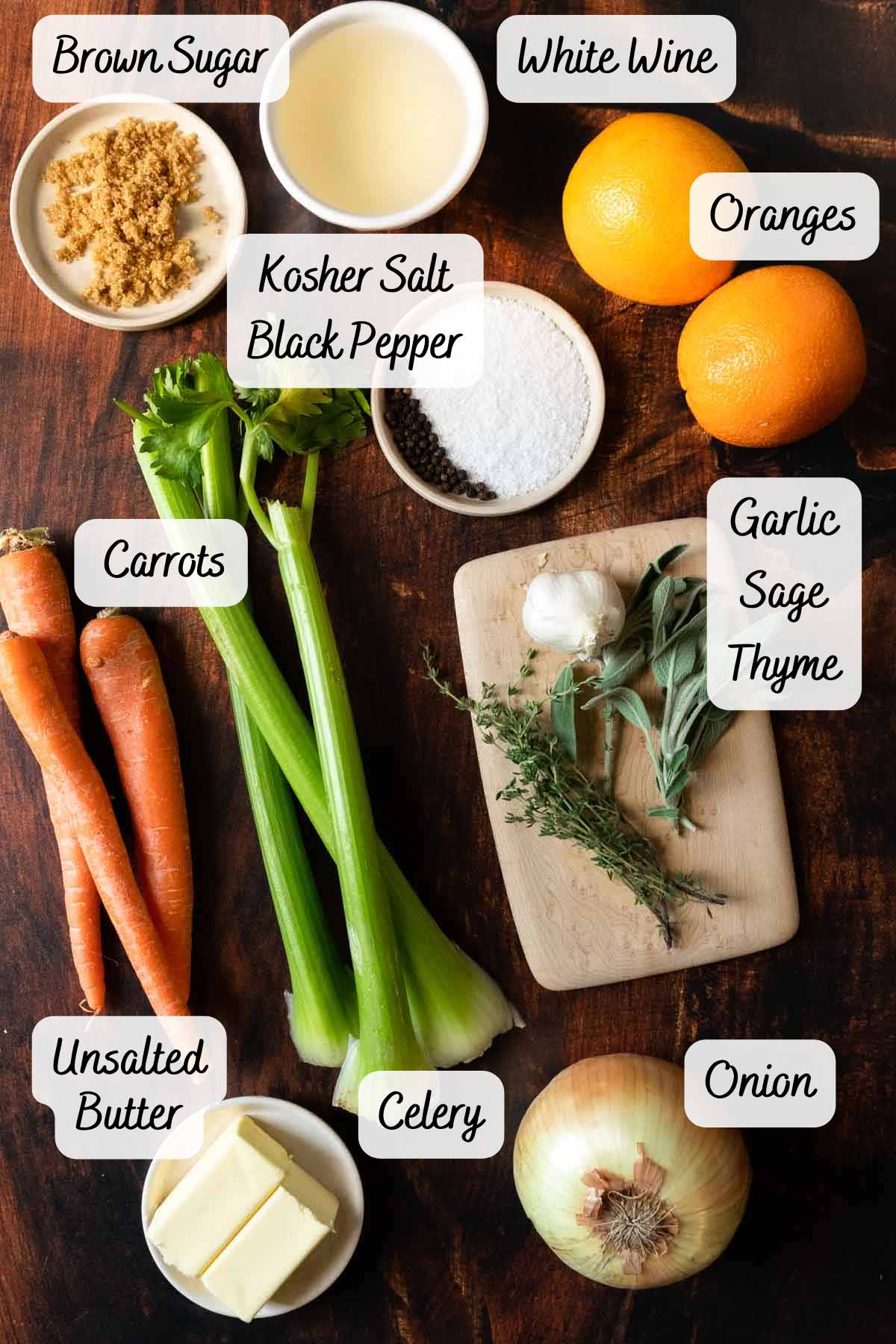
🦃 How Much Salt Do You Need to Dry Brine a Turkey?
The amount of salt depends on the size of the bird. The general rule of thumb is 1 tablespoon of kosher salt for every 5 pounds of turkey. Give or take a scooch.
⏲️How to Dry Brine a Turkey
Dry brining your turkey takes just a few extra minutes of hands-on time and the payoff is enormous. Unlike with a wet brine, you can dry brine a partially frozen turkey. But a defrosted turkey is better.
Step 1 - Prep the Brine
In a small food processor, pulse together all of the brine ingredients until combined. I did mine a spice grinder!
Place the turkey on a roasting pan or rimmed baking sheet, remove anything inside the cavity including the neck and giblets, then pat the whole turkey dry with paper towels. Yes, pat dry inside and out.
I like to line the pan with aluminum foil and place a wire rack inside the baking sheet. This will catch any juices.
Step 2 - Rub the Turkey
Add 2 teaspoons of the turkey brine mix to the cavity of the turkey and rub it in well, then loosen the skin over the breast and legs, and add more brine mix under the turkey skin.
Sprinkle the outside of the turkey with the rest of the brine, then rub it in all over. You can also do this in a large roasting pan but you should wash the pan out after you brine the turkey but before before you roast the turkey.
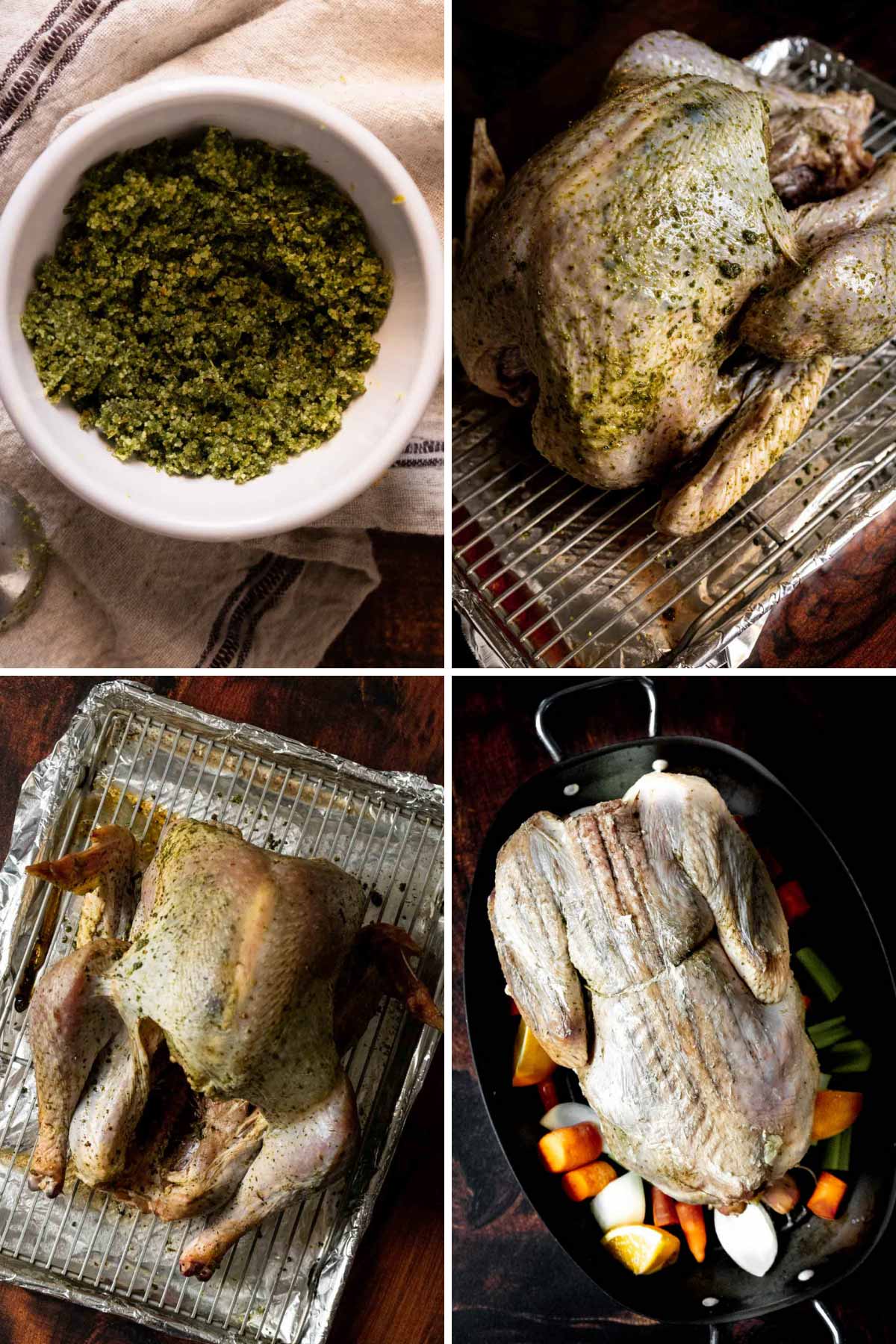
Step 3- Chill the Turkey
Bend the wings back, tuck them under the breast, and set the pan with your turkey in the fridge for 1-3 days.
Let the turkey sit uncovered or you can loosely tent it with aluminum foil if you are worried about cross-contamination. The skin needs to dry out to produce the best end result. Do not cover it with plastic wrap or anything that would seal it up.
Step 3- Roast Your Turkey
You can use this method with any roast turkey recipe but I follow the steps listed on my sage roast turkey recipe.
Do not rinse the turkey or add any more salt to it before roasting.
👩🏻🍳 Expert Tips
Make sure you use kosher salt, not table salt. They are not the same!
Pat the turkey dry before brining. This removes excess moisture which results in crispier skin.
Season well! Make sure you’re getting the brine under and over the skin and rubbing it in all over. We want that flavor in every single bite of the bird.
Do not brine a kosher or self-basting turkey. These were brined before packaging.
You can brine a partially frozen turkey, but it may be hard to loosen the skin properly. For the best results, use a fully thawed turkey.
Quantities are for a 15-pound turkey, so adjust accordingly if your turkey is bigger or smaller.
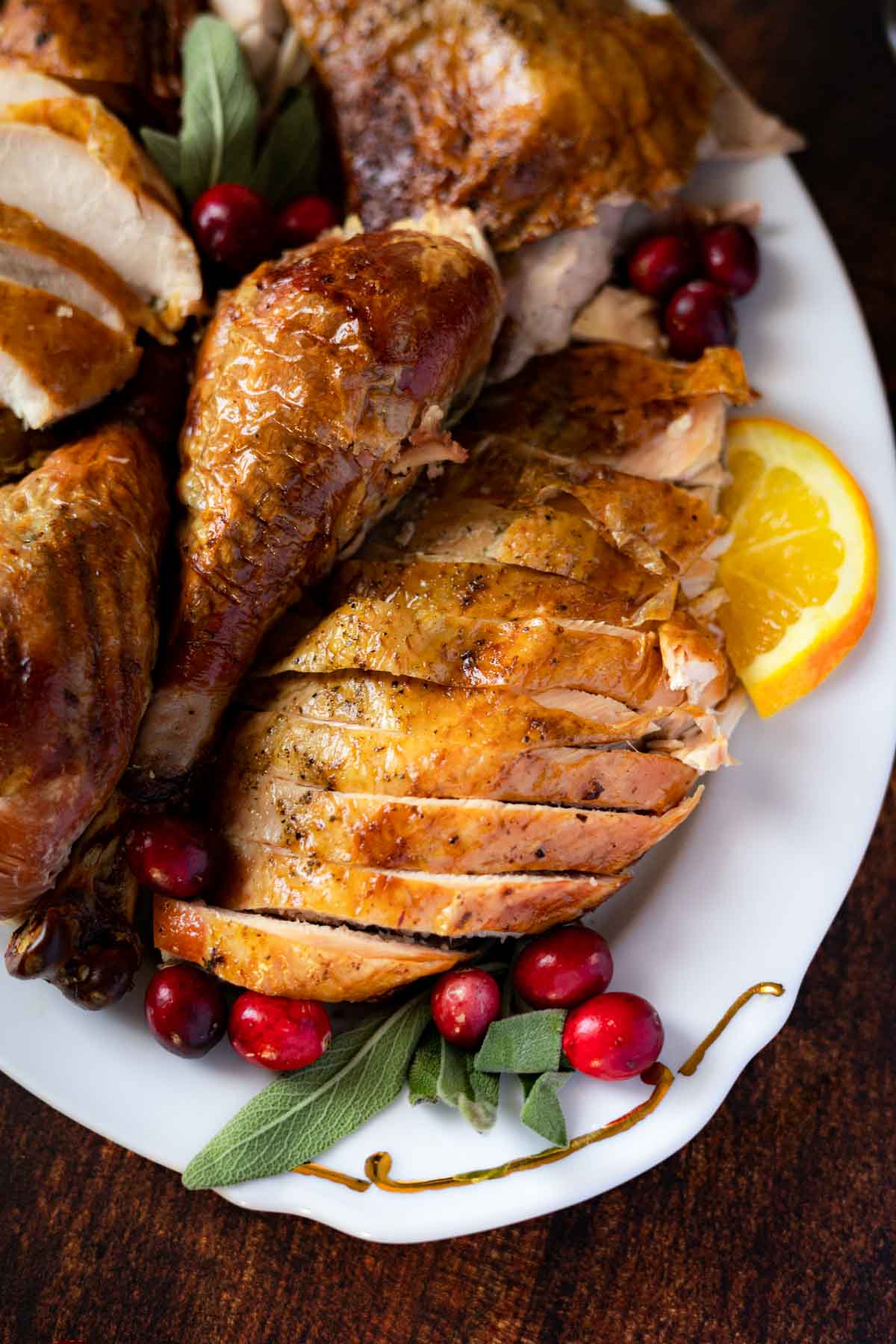
🌡️Food Safety
Raw turkey should not sit at room temperature for more than an hour or two. Once you add the brine, stick the bird in the fridge to ensure bacteria can’t grow as it brines!
Thoroughly wash your hands and any equipment that touches the raw turkey meat.
Recipes Using Leftover Turkey
💬Frequently Asked Questions
While both the wet brine and the dry brine have their upsides and downsides, this dry brine is one of my favorite ways to brine a turkey. It requires just a few ingredients and a few minutes and results in the most flavorful turkey every time.
Overall, dry brining is a simple and effective way to add flavor and moisture to a turkey and can help ensure that your turkey turns out tender and juicy when cooked.
Improved flavor: Dry brining helps to season the meat from the inside out, resulting in a more flavorful and well-seasoned turkey.
Moisture retention: The salt in the dry brine mixture helps to draw moisture out of the turkey and then back into the meat, which can help keep it moist and tender while cooking.
Simplicity: Dry brining is a quick and easy way to season a turkey, as it doesn't require any special equipment or a large amount of liquid.
Time savings: Because dry brining doesn't require the turkey to be soaked in a liquid solution, it can save time compared to wet brining. This means you can prepare the turkey for cooking more quickly.
You can dry brine your turkey in the fridge for anywhere from 1-3 days. The longer it sits, the more flavor it will soak up! I don’t recommend brining for more than 3 days. If it sits too long, the texture of the bird will be negatively affected.
You can dry brine your turkey in the fridge for anywhere from 1-3 days. The longer it sits, the more flavor it will soak up! I don’t recommend brining for more than 3 days. If it sits too long, the texture of the bird will be negatively affected. So if you are planning a brined turkey for Thanksgiving this means you need to start the process between Sunday and Wednesday morning.
Did You Enjoy Making This Recipe? Please rate this recipe with ⭐⭐⭐⭐⭐ or leave a comment. It helps other wonderful people connect with my food.
📖 Recipe Card
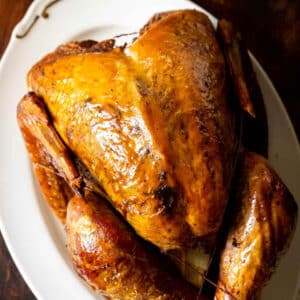
How to Dry Brine a Turkey
Ingredients
- 3 Tablespoons kosher salt
- 2 Tablespoons fresh thyme roughly chopped
- 2 Tablespoons fresh sage roughly chopped
- 1 Tablespoon brown sugar
- 2 oranges zest only or use 3 lemons
- 1 teaspoon black pepper
- 15 pound whole turkey
Instructions
- Place all the ingredients in a small food processor and pulse several times. The salt mixture will be a light green.3 Tablespoons kosher salt, 2 Tablespoons fresh thyme, 2 Tablespoons fresh sage, 1 Tablespoon brown sugar, 2 oranges, 1 teaspoon black pepper
- Remove the turkey from the wrapping and place the turkey on a clean roasting pan or large baking sheet. Remove the giblets and neck from inside the cavity. You can discard or save for another use. Remove or discard any plastic or metal cages. Pat the turkey dry, inside and out, using paper towels.15 pound whole turkey
- Sprinkle 2 teaspoons of the salt mixture into the cavity of the turkey and rub it in.
- Gently loosen the skin over the breast and meaty part of the legs. Rub 4 teaspoons of the salt mixture into the meat of but under the skin. Then sprinkle the remaining salt mixture over all the outside of the turkey. Running it into the skin.
- Bend the wings back and tuck under the breast. Place the turkey breast side up uncovered into the refrigerator for at least 1 day up to 3 days.
Video
Notes
- The quantities for brining the turkey are for a 15-pound bird. Adjust accordingly.
- You can brine a partially frozen turkey but it may be hard to loosen the skin properly.
- You must use kosher salt, not table salt.
- Do not brine kosher or self basting turkey. They were brined before packaging.



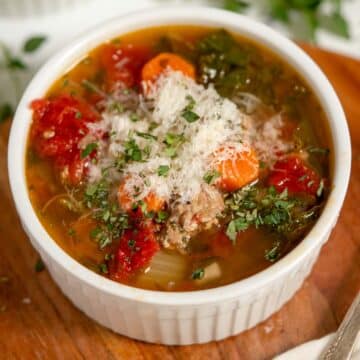
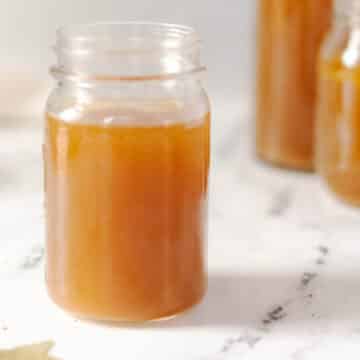





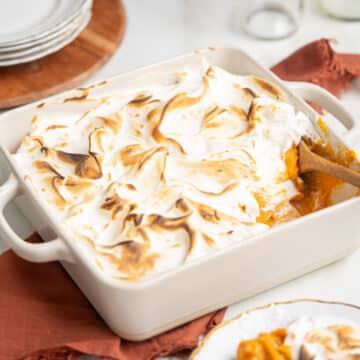
Comments
No Comments